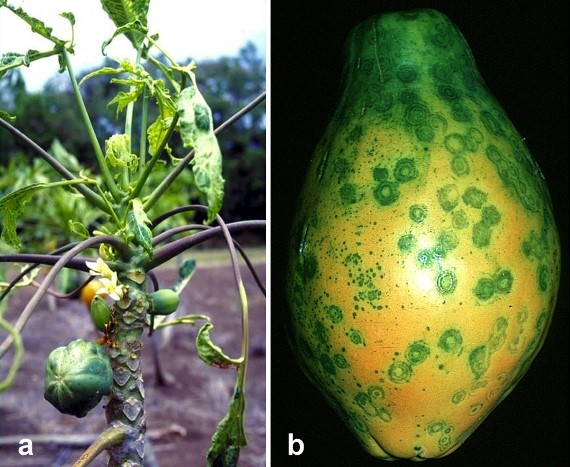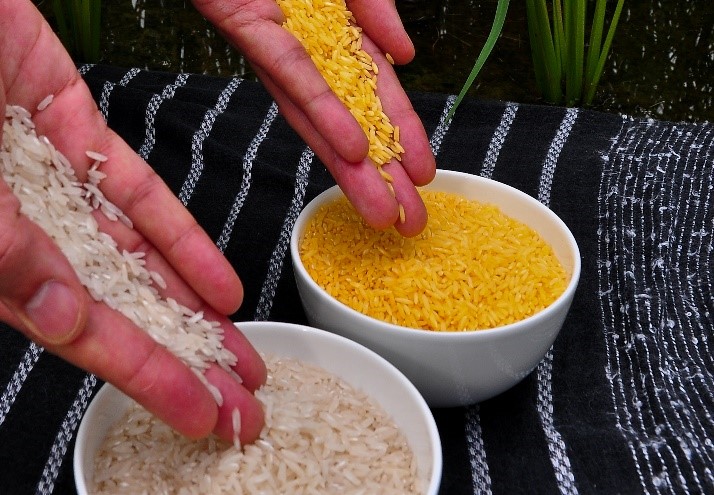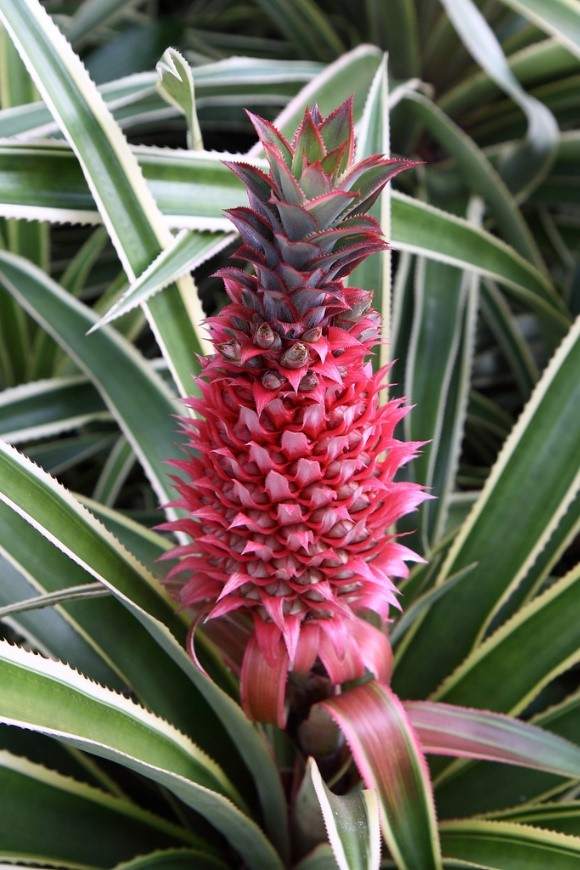Genetic engineering works because DNA is similar
All organisms translate DNA the same way, making it possible for any organism to read DNA from even unrelated organisms.

There is much confusion surrounding the how, why and what of genetically modified (GM) crops, which are crops developed using genetic engineering technology. Some articles may lead one to believe GM crops somehow produce their own weed or insect control chemicals, and by consuming any part or product from that plant, the consumer is eating a dangerous chemical. This is not the case. It is true some GM plants have added protection from a new trait, but FDA regulations require modified plants to not be harmful to humans. So, how does this new trait work and not harm humans?
First, understand all organisms use the same DNA genetic coding system which form strands of genes. Genes code (make) for specific proteins and can vary in the way individual subcomponents are arranged, but genes all consist of the same subcomponent molecules. Therefore, it is possible to move genetic material between unrelated organisms and have it function. For example, under normal circumstances, daffodils and rice cannot exchange genetic material, but rice is capable of interpreting daffodil DNA. Therefore, since they cannot exchange genes through standard breeding, the exchange is done through a genetic engineering laboratory process. Laboratory procedures are often a “last resort” approach. Plant breeders still use standard breeding methods to exchange traits if the trait exists in a compatible plant.
Insect protection
Just like humans, insects get bacterial infections. Some moth and butterfly pests are susceptible to infection by a bacterium called Bacillus thuringiensis, Bt for short. There are other bacteria affecting insects, but Bt is the most common. Bt is a naturally occurring soil bacterium and there are trillions in our environment, including your backyard. Bt produces a protein crystal that binds to receptors on the stomach wall of certain insects, and then it penetrates creating holes. The holes allow gut bacteria and other contents to spread throughout the larva, usually killing it within 24 to 48 hours. Bt is harmless to mammals, birds, fish and other organisms, which neither have the Bt receptors nor the alkaline stomach conditions Bt needs for activation.
Since all DNA functions the same way, researchers removed the portion of Bt DNA that makes the toxic protein and placed it into various plant systems like corn. Therefore, when European corn borer feeds on corn having the Bt gene, it dies. This saves corn growers from applying pesticides and increases yield and quality because there is less insect damage to the corn stalk and ear. In this case, by eating the corn, we are eating the “insecticide”, but it does no harm because our acidic digestive system and lack of proper receptors prevents the compound from having the same effect it has on European corn borer.
Herbicide protection
Herbicides are chemical compounds that kill plants. The way they work is called their Mode of Action (MOA). The herbicide Glyphosate works by targeting a key enzyme in plants called 5-enolpyruvyl-shikimate synthase (EPSPS), which is necessary for making certain amino acids. Without EPSPS, plants deplete those amino acids and essentially starve.
Glyphosate (the active ingredient in Roundup) binds to EPSPS and blocks its activity, thereby killing the plant. However, certain bacteria have a slightly altered form of EPSPS. That portion of the bacteria DNA responsible for the altered EPSPS form was moved into plants giving them a new EPSPS pathway, making them resistant to glyphosate. Crops with this altered pathway now can have glyphosate applied to them, killing surrounding weeds but not killing the crop.
To ensure food safety, glyphosate is applied early in the plant growth cycle so by harvest there is minimal to no residue on the plant portion (e.g., corn grain) we utilize. Compared to other herbicides, glyphosate is potentially less toxic to other organisms.

Virus disease protection
Genetic engineering has made some plants tolerant to virus diseases. The best known is papaya but there is also some summer squash. A process called Pathogen-Derived Resistance (PDR) was used to produce these plants. This is similar to vaccinations for human and animal viral diseases. PDR utilizes a gene or a portion of a gene of the virus of concern. This incorporated viral gene allows the engineered plant to recognize the virus when it enters into the plant tissue and disrupts the viral infection process providing protection against that specific disease. This method saved the Hawaiian papaya industry from the papaya ringspot virus.

Color and added nutrition
Genetic engineering has been used to produce plant color changes, prevent premature browning and increase nutritional value. The first genetically engineered color change GM crop is golden rice. Recent additions include pink pineapple and non-browning apples and potatoes. These changes are more than just “look what I can do” efforts. Golden rice has a golden yellow color due to increased beta-carotene, a precursor of vitamin A, critical for healthy vision and often lacking in diets of people living in developing countries were rice is the main staple starch.
The first golden rice was developed by taking DNA sequences (genes) from daffodils. A second generation of golden rice has since been developed having 23 times more beta-carotene using corn and bacteria DNA. The donor DNA was inserted into rice DNA and the rice interprets the added DNA, resulting in increased beta-carotene production in the grain providing an inexpensive and readily available source of Vitamin A.

Immature pineapple fruit contains lycopene (the same compound that makes tomatoes red) and is pink, but as the fruit develops, lycopene is converted by an enzyme to carotenoids that give mature fruit its yellow color and distinctive flavor. Pink pineapple was engineered to suppress the protein that converts the color, resulting in mature pink fruit with a slightly sweeter flavor. However, the engineering process also included a tangerine gene to reduce bromelain, a compound causing an allergic reaction for some, and a potato gene to reduce flowering and increase yield (i.e., fewer flowers sometimes improves marketable yield). These changes can be controlled with genetic engineering, but may never happen with traditional pineapple reproduction because we would have to wait for natural mutations to occur which may never happen.
Another plant-engineered area involves a reduction in browning resulting from cutting or bruising. When this happens, the enzyme polyphenol oxidase (PPO) contacts polyphenols (compounds contributing to aroma and taste). Bringing PPO and polyphenols together forms the brown colored chemical, melanin, which reduces attractiveness, and we decide the apple is no good. The reaction causing color change happens faster than it takes tissue to deteriorate. Knowing that does not matter since it still “looks” bad. Non-browning apples were engineered to produce substantially lower amounts of PPO and, therefore, less melanin is formed, and they do not brown. This engineered reduction in PPO production results from gene silencing or simply reducing expression of the gene producing PPO.
Summary
Genetic engineering of plants is not a haphazard approach to improvement. It is a new tool requiring much thought and research to identify desirable genes, what they do, where they can be found and then place them into the DNA of a plant to produce a new trait. On top of that, to ensure consistency and safety, multiple laboratory and field steps are mandated prior to introduction. In some cases, DNA producing proteins from plants already in our diet are transferred to another plant in our diet.
References
- Gene Design 2 – Gene Constructs. Roundup Ready, Plant and Soil Science eLibrary
- Mechanisms of Herbicide Resistance, Pesticide Environmental Stewardship



 Print
Print Email
Email






